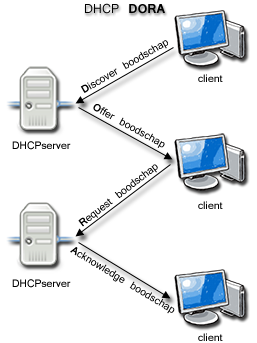10-D.4: Static VS Dynamic IP Addresses
- Page ID
- 40579
EXAM OBJECTIVES COVERED
1.3 Given a scenario, configure and verify network connection parameters.
Static vs Dynamic IP Addresses
IP stands for Internet Protocol. IP address may be a distinctive numerical symbol allotted to every device on a network to spot each affiliation unambiguously.
The distinction between a Static and Dynamic IP address has to do with how the address gets assigned and how long that address is valid. Both static IP Address and Dynamic IP Address are used to identify a computer on a network. Static IP addresses are assigned by the network administrator, who gets them from their Internet Service Provider. Static addresses remain fixed to a specific device until someone changes that device's IP address.
Dynamic IP addresses are provided by a DHCP server. Dynamic addresses expire after a preset amount of time and must be renewed. Most often a network's administrator will use one of the private network address spaces to assign addresses within the organization's network. We will discuss DHCP in more detail on the next page.

Differences between Static and Dynamic IP addressing:
| STATIC IP ADDRESS | DYNAMIC IP ADDRESS |
|---|---|
| Provided by ISP (Internet Service Provider). | Provided by DHCP (Dynamic Host Configuration Protocol). |
| Static IP address does not change any time, which means if a static IP address is provided then it can’t be changed or modified. | Can change any time. |
| Less secure. | There is a lower amount of risk than static IP address’s risk. |
| Difficult to designate. | Easy to designate. |
| The device designed by static IP address can be traced. | The device designed by dynamic IP address can’t be traced. |
| More stable than dynamic IP address. | Less stable than static IP address. |
| The cost to maintain the static IP address is higher. | The maintaining cost of dynamic IP address is less. |
| Used where computational data is less confidential. | Used where data is more confidential and needs more security. |
Adapted from:
"Difference between Static and Dynamic IP address" by MKS075, Geeks for Geeks is licensed under CC BY-SA 4.0

